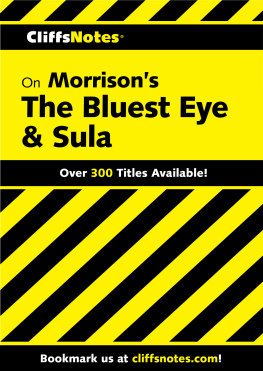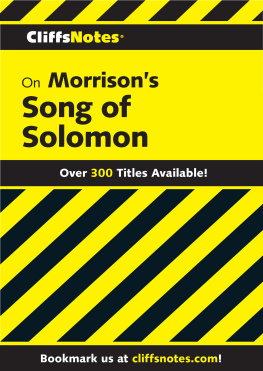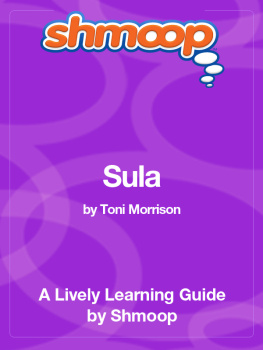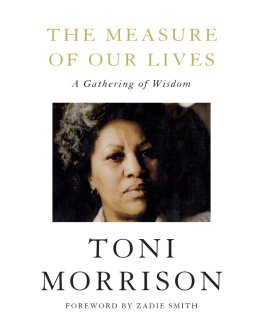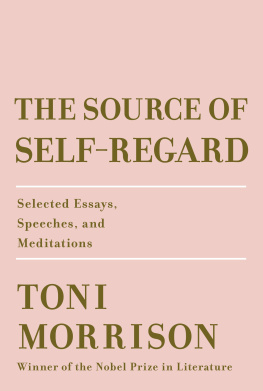Copyright 1997 Houghton Mifflin Harcourt Publishing Company
All rights reserved.
www.hmhco.com
cliffsnotes.com
For information about permission to reproduce selections from this book, write to or to Permissions, Houghton Mifflin Harcourt Publishing Company, 3 Park Avenue, 19th Floor, New York, New York 10016.
The publisher and the author make no representations or warranties with respect to the accuracy or completeness of the contents of this work and specifically disclaim all warranties, including without limitation warranties of fitness for a particular purpose. No warranty may be created or extended by sales or promotional materials. The advice and strategies contained herein may not be suitable for every situation. This work is sold with the understanding that the publisher is not engaged in rendering legal, accounting, or other professional services. If professional assistance is required, the services of a competent professional person should be sought. Neither the publisher nor the author shall be liable for damages arising herefrom. The fact that an organization or website is referred to in this work as a citation and/or a potential source of further information does not mean that the author or the publisher endorses the information the organization or website may provide or recommendations it may make. Further, readers should be aware that Internet websites listed in this work may have changed or disappeared between when this work was written and when it is read.
Trademarks: CliffsNotes, the CliffsNotes logo, Cliffs, cliffsnotes.com, and all related trademarks, logos, and trade dress are trademarks or registered trademarks of Houghton Mifflin Harcourt Publishing Company. All other trademarks are the property of their respective owners. Houghton Mifflin Harcourt is not associated with any product or vendor mentioned in this book.
eISBN 978-0-544-18002-4
v1.0516
Toni Morrison Biography
Childhood to Womanhood
Although she grew up in the North, southern traditions played a large part in Toni Morrisons upbringing. Her maternal grandfather, a Kentucky carpenter and farmer, saw no chance for advancement because of the states racism and poverty, so he moved his family to Ohio. From them, Morrison absorbed stories and tales about the horrors of black life during the Reconstruction eraroughly, the twelve years following the Civil Warwhen the southern states that seceded from the Union were politically restructured and economically restored. She recognized that whatever I did was easy in comparison with what they had to go through.
Morrisons father, sharecropper George Wofford, had similar reasons to escape racial oppression in Georgia and relocate in the North. Even there, however, he distrusted every word and every gesture of every white man on earth. In contrast, Morrisons mother, Ramah, a more educated, trusting person than her husband, was a gentler, less confrontational parent to young Chloe Anthony Wofford, who would become world-renowned Toni Morrison, 1993 winner of the Nobel Prize for Literature.
The second of four children, Morrison was born on February 18, 1931, and grew up on the far western fringe of Cleveland, in the multicultural environment of Lorain, Ohioa steel town of around 75,000, blending Czech, German, Irish, Greek, Italian, Serb, Mexican, and black suburbanites. There, she experienced exclusion but did not suffer the intense racism felt by such black writers as Maya Angelou, Dick Gregory, and Richard Wright.
Brought up in a nurturing, religious environment, Morrison says, We were taught that as individuals we had value, irrespective of what the future might hold for us. The women of the black community, whether aunts, grandmothers, or neighbors, served as a tightly woven safety net. The oral tradition, passed down by both men and women, cushioned blows to self-esteem with stories and songs about the Underground Railroad, daring rescues, and other perils and triumphs of black history.
Morrison was expected to excel even though she had to contend with the racial prejudice that accompanied growing up in an educational system that ignored the contributions of nonwhites. At Lorain High School, she graduated at the top of her class, then surprised her family by insisting on leaving Lorain to obtain a college degreea decision that necessitated her father working three jobs. The move from Ohio alarmed her mother; all of her daughters friends and relatives were in Ohio. Self-assured about her ambitions, Morrison has remarked, You take the village with you. There is no need for the community if you have a sense of it inside.
Morrison entered Howard University in Washington, D.C., changed her first name from Chloe to Toni, and began studying under strong African-American spokesmen, including poet Sterling Brown and philosopher and critic Alain Locke, a Rhodes scholar who edited The New Negro. She graduated with a B.A. in 1953 and completed a masters degree in English at Cornell two years later, with a concentration in the works of Virginia Woolf and William Faulkner.
Teaching and Writing
In 1957, Morrison taught humanities and English at Texas Southern University, then worked for eight years as an English instructor at Howard University. In 1966, she joined a monthly literary symposium and contributed stories that she had begun in high school. Among them was a story she read aloud to the symposium about a black girl who wanted to make up for her so-called physical shortcomingsher strong Negroid featuresby petitioning God for blue eyes.
From 1965 to 1983, Morrison served as a textbook editor at Random House, in Syracuse, New York. Divorced, raising two small sons, and working at a full-time, demanding job, she still managed to plug away at The Bluest Eye, her personal therapy for depression and isolation. Explaining her drive to write, Morrison has said that she had a deep need for books that I had wanted to read. No one had written them yet, so I wrote them. She has said this about her compulsion to complete her first manuscript: I had no will, no judgment, no perspective, no power, no authority, no selfjust this brutal sense of irony, melancholy, and a trembling respect for words. I wrote like someone with a dirty habit. Secretlycompulsivelyslyly.
By the time the manuscript for The Bluest Eye was complete in 1968, Morrison had risen to the rank of senior editor at Random Houses publishing headquarters in New York City. According to her, her first novel sold for racial reasons: Random House wanted a black writer in its stable.
A year later, she returned to the classroom for a year as the Albert Schweitzer Professor of Humanities at State University of New York in Purchase, settled into a renovated boathouse outside Nyack, and continued to write. Four years later, she completed Sula, her second novel, which continues her demarcation of the black womans world, with its secret power, perversity, unity, and mysticism. The critics were divided about the horror of a mothers murdering her drug-addicted son: To some, the act was unforgivable; to others, the woman exhibited a mothers utmost love and courage. What none of the critics could have foreseen, however, was that Morrisons portrait of the drug-addicted son was an omen of ghetto life in the coming decades.
In 1974, an attraction to the lodestone of black literature led her to compile a memory album. Introduced by Bill Cosby as a folk journey of Black America and composed of bits and pieces from slave narratives, advertising, photographs, media clippings, recipes, and patent office records, The Black Book reveals three centuries of black history. Almost like remediation in the culture that her public education had denied her, the research, her literary archeology, provided a cache of motifs, themes, and images for later fiction-including a clipping from a nineteenth-century magazine that would inspire
Next page
